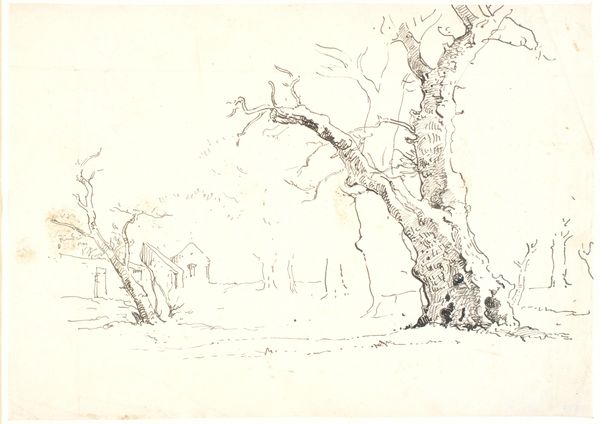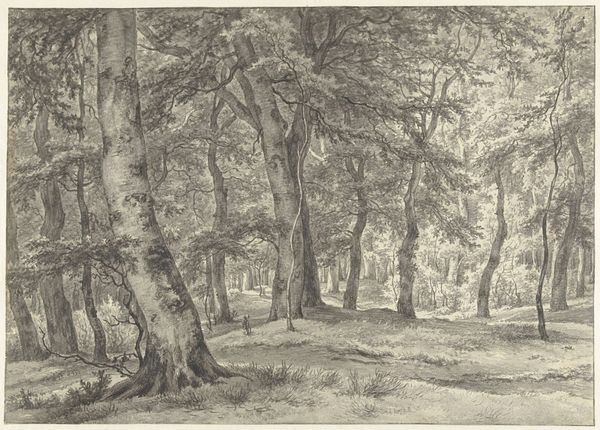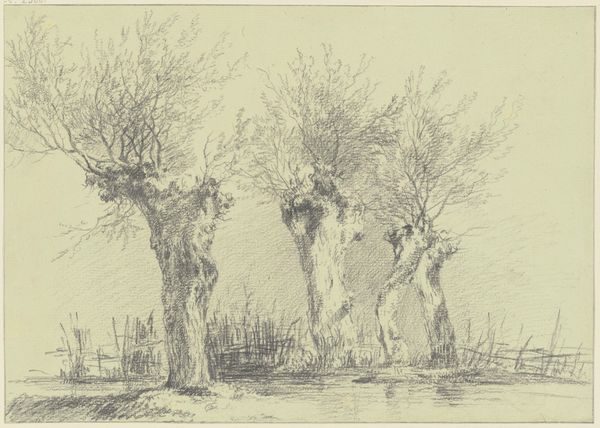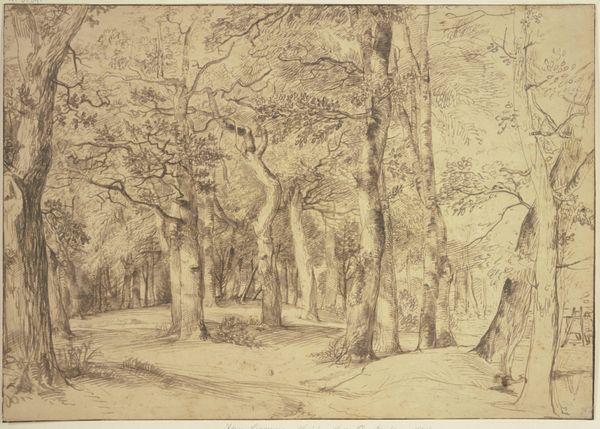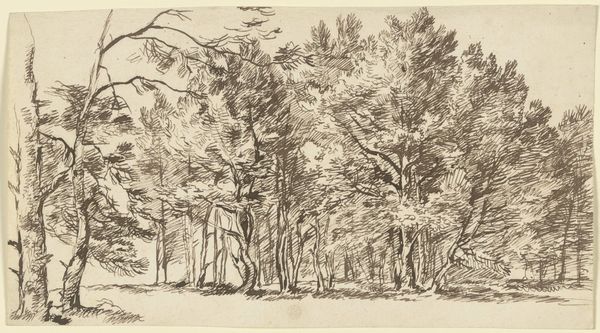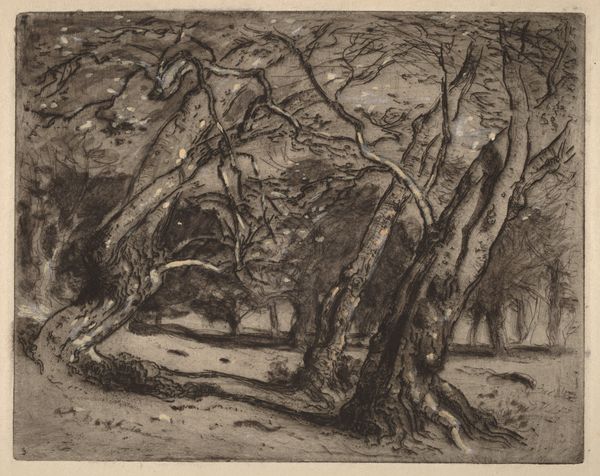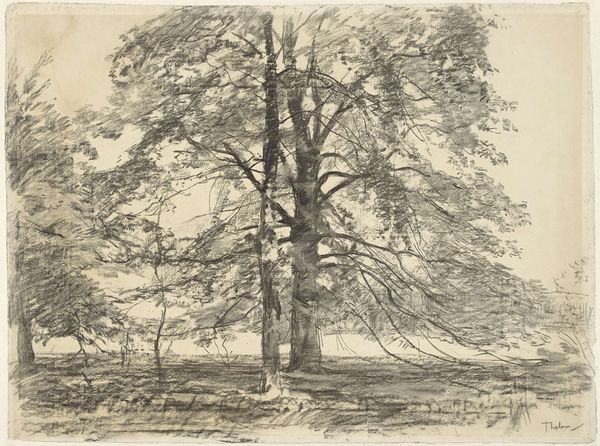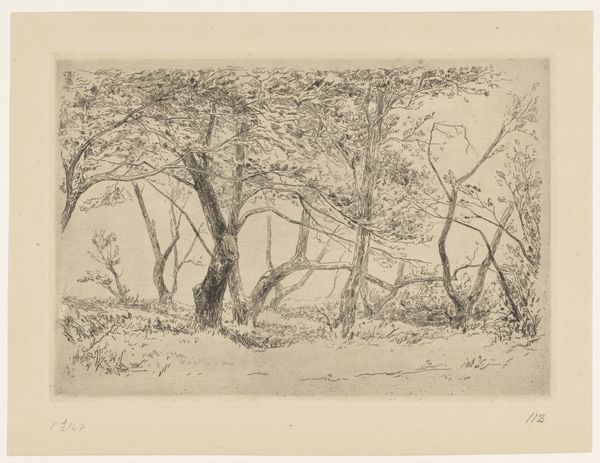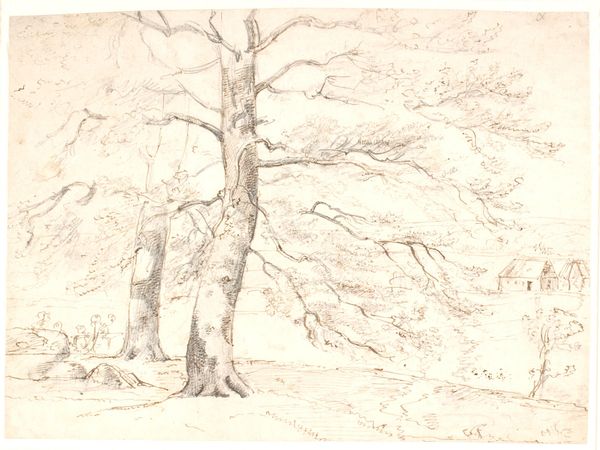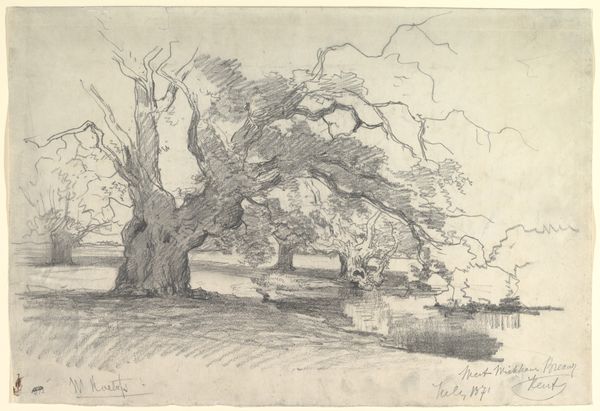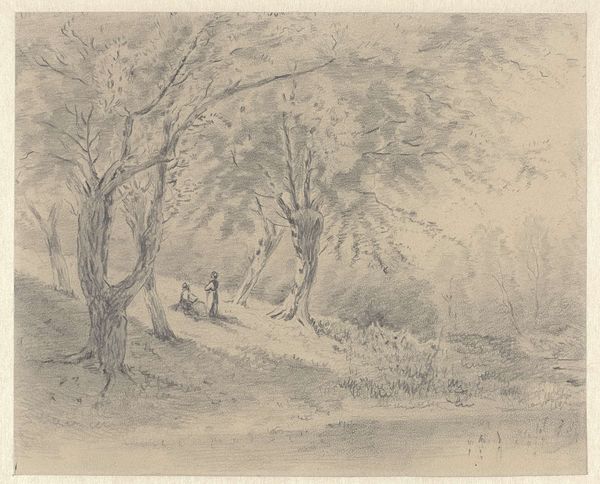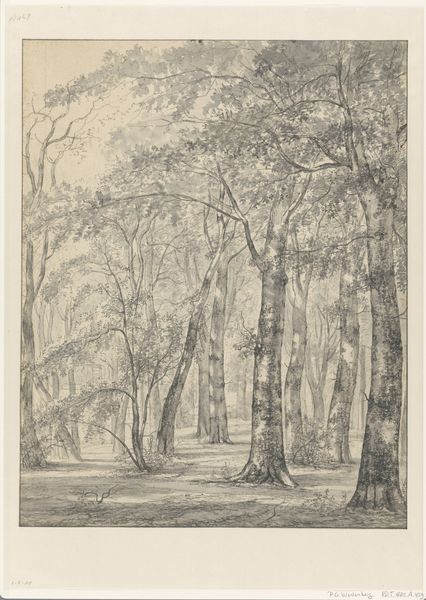
drawing, pencil, graphite
#
drawing
#
landscape
#
romanticism
#
pencil
#
graphite
Dimensions: height 172 mm, width 212 mm
Copyright: Rijks Museum: Open Domain
Editor: This is "Winterlandschap," a graphite drawing made by Adrianus Eversen sometime between 1820 and 1835. The delicate lines give it such a quiet, almost lonely feel. What stands out to you? Curator: What strikes me is the overt dependence on graphite – and, likely, paper. Note the visible texture of the paper and how the graphite is layered to build tone and form. This wasn't just about depicting a winter scene. Consider, too, how the production and trade of these materials themselves impacted Eversen's world. What do we know about graphite mining and paper production at that time in that region? Editor: I haven't thought about the industrial aspects. Is there significance in choosing graphite, other than its accessibility? Curator: Absolutely. Graphite offered a level of detail and nuance that other readily available materials might not. Think about the process of drawing – the physical act of applying graphite to paper, the pressure, the control. It suggests a deliberate choice, perhaps even a valuing of meticulous craftsmanship amidst a landscape also touched by labor, human intervention and extraction of materials. Does the way Eversen utilizes this "industrial" medium to capture such a serene natural landscape create tension? Editor: That's a compelling idea! Maybe the artist wanted to show a connection rather than a contrast. He chose to use what was available to him, showing his connection to his world through his art-making process. Curator: Exactly! And we should not separate his landscape and the materiality. This artwork offers so much, but its real value is showing the cultural ties to natural resources during the Romantic era.
Comments
No comments
Be the first to comment and join the conversation on the ultimate creative platform.
